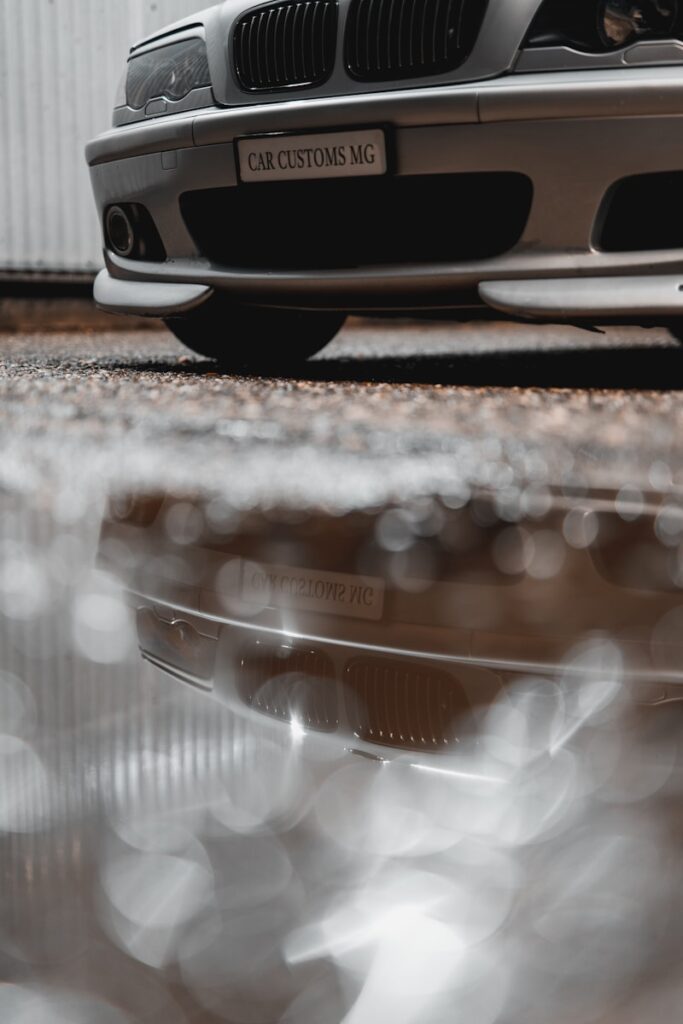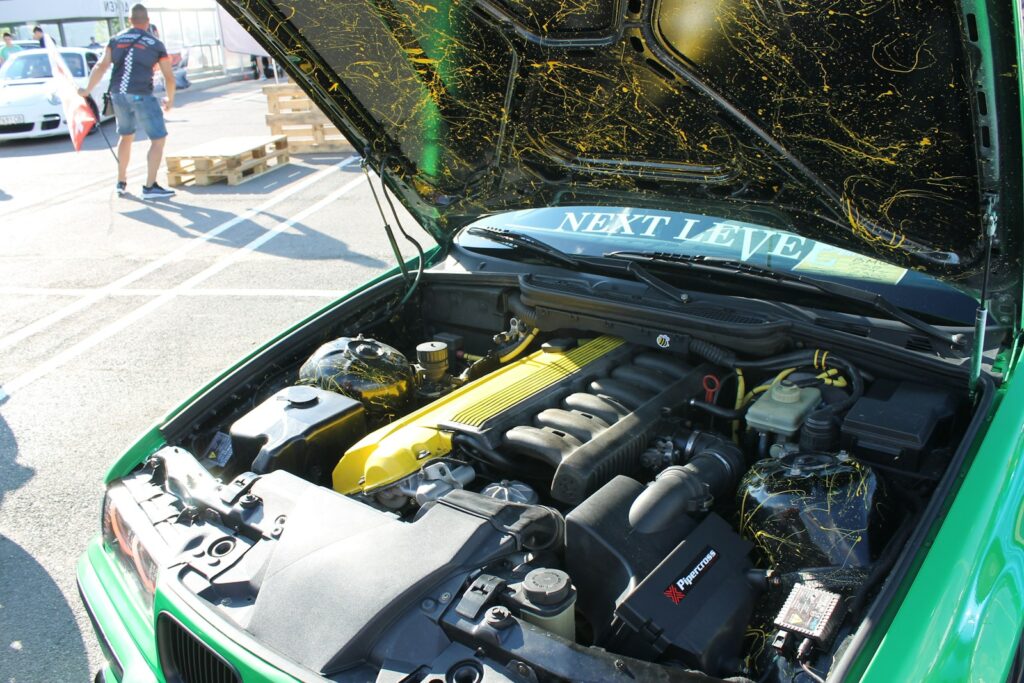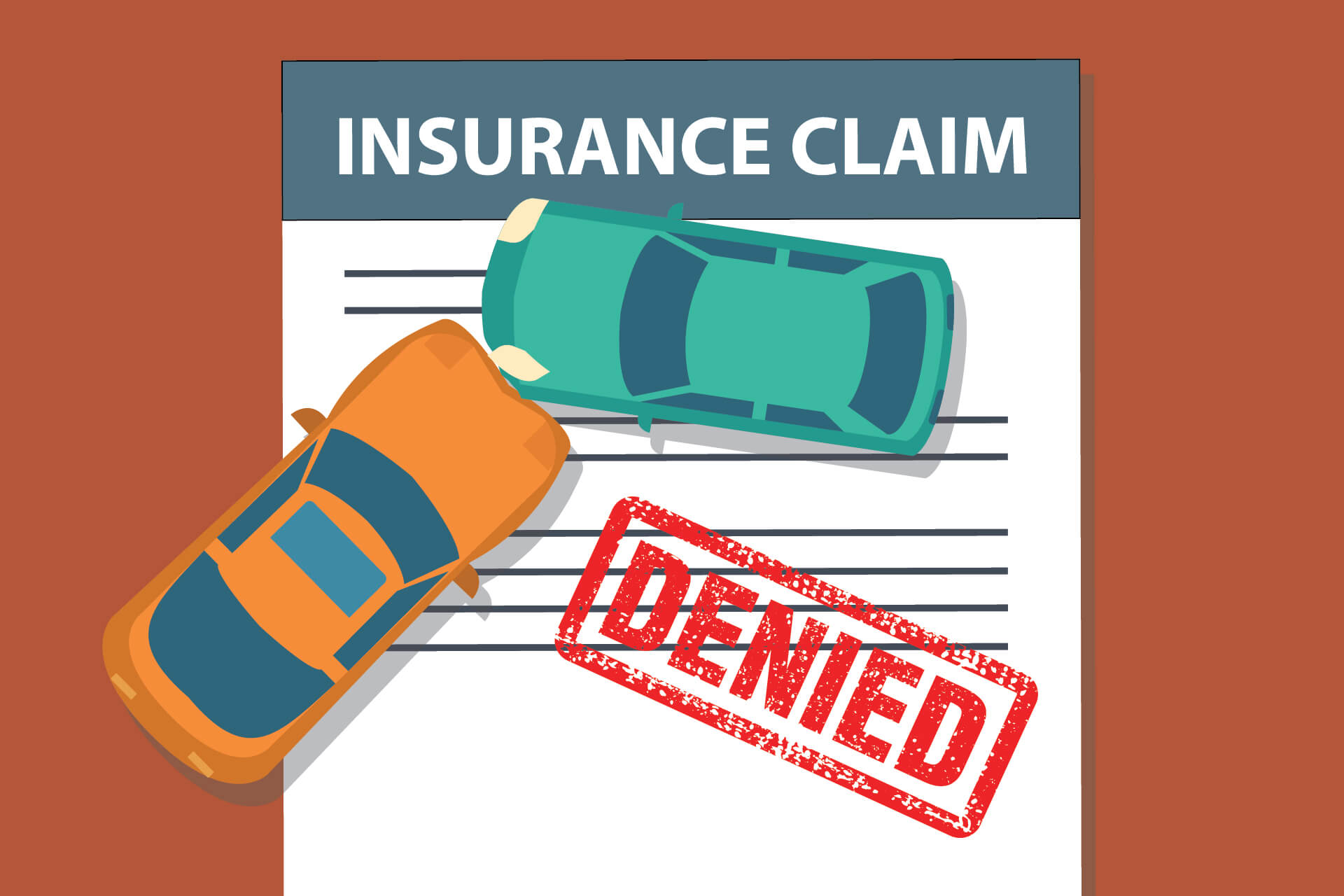
For many households, a car represents the second-biggest investment after their home. It’s a significant asset, and understandably, owners hope to recoup a decent portion of its value when it’s time to sell or trade up to a new vehicle. Yet, the journey from ownership to sale is often fraught with subtle habits and seemingly innocent maintenance choices that can, quite literally, slash thousands from a car’s potential resale price. These value-killers lurk everywhere, from overlooked mechanical issues to surprising lifestyle factors.
Understanding these pervasive pitfalls is not just about avoiding disappointment at the dealership; it’s about actively protecting your investment and maximizing your financial return. In today’s competitive used-car market, where thousands of vehicles are vying for buyer attention, standing out in a good way is paramount. Savvy buyers are increasingly informed, easily accessing vehicle history reports and keenly scrutinizing every detail, making it harder for neglect to go unnoticed.
This in-depth analysis will meticulously uncover the most significant factors that erode a car’s value, transforming what might seem like minor oversights into major financial setbacks. By addressing these hidden threats proactively, you can ensure your vehicle maintains its curb appeal, mechanical integrity, and ultimately, its worth, ensuring you get the best possible deal when the time comes to part ways.
1. **Overlooking Fluid Leaks**Fluid leaks are among the most immediate and alarming red flags for any potential car buyer, signaling underlying problems that are often both serious and costly. When a buyer spots telltale stains of oil, coolant, or transmission fluid beneath a vehicle, their confidence in the car’s overall health instantly plummets. These visible indicators are rarely isolated cosmetic issues; instead, they hint at much deeper mechanical distress within vital systems like the engine, transmission, or even the braking system.
The implied repairs for addressing fluid leaks are typically urgent and substantial, often requiring extensive diagnostic work and part replacement that can quickly accumulate into a hefty bill. For a buyer, this translates directly into an immediate financial burden upon purchase, making a car with unresolved leaks an inherently high-risk proposition. This perceived financial risk often leads to a significant reduction in the asking price, or worse, can become an outright deal-breaker, causing buyers to walk away entirely.
Moreover, fluid leaks suggest a broader pattern of neglect. A car owner who overlooks such a fundamental issue might also be perceived as having ignored other critical maintenance, further eroding buyer trust. Therefore, resolving any fluid leaks promptly is not just about preventing damage; it’s about preserving buyer confidence and ensuring that the vehicle presents as a well-maintained and reliable investment, rather than a hidden money pit.
Read more about: Buyer Beware: 15 Vintage Coupes That Rarely Make It Past 120,000 Miles Without Major Overhauls
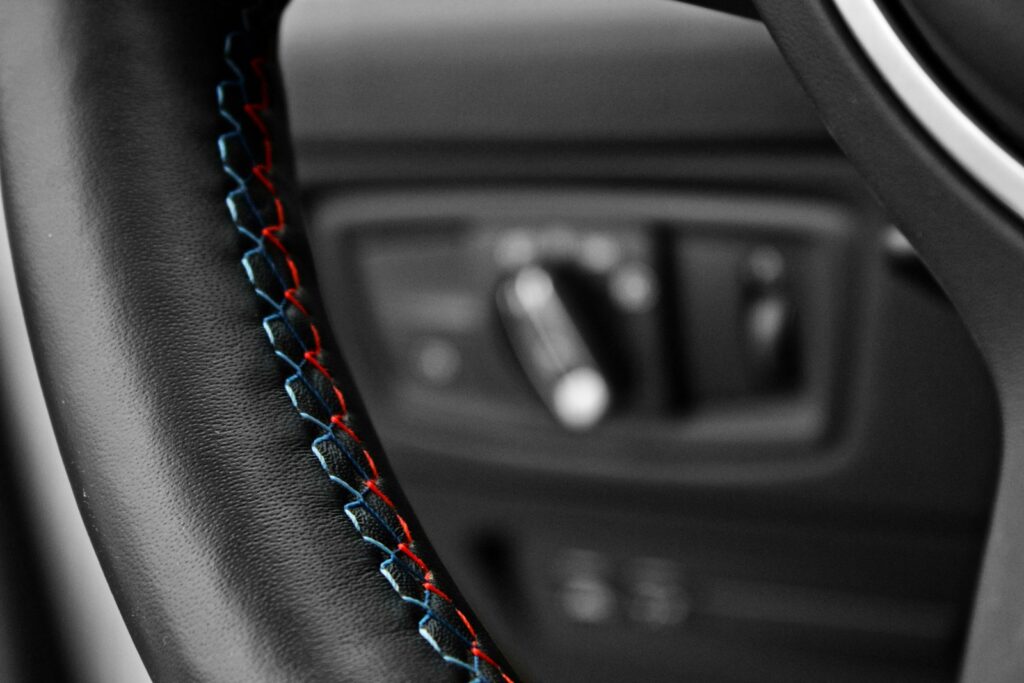
2. **Delaying Timing Belt/Chain Service**Among the most critical and often expensive maintenance items for many vehicles is the timing belt or chain service. Manufacturers specify strict intervals for replacing these components, and missing these crucial appointments carries catastrophic risks. A sudden failure of the timing belt or chain can lead to severe internal engine damage, including bent valves, cylinder head damage, and in many cases, complete engine loss. This kind of damage translates to repairs that often cost thousands of dollars, sometimes even exceeding the value of the car itself.
Potential buyers are acutely aware of the financial implications of an overdue timing system service. Vehicles with components that are past their manufacturer-recommended replacement intervals are immediately classified as high-risk, as the specter of impending, labor-intensive, and extremely expensive repairs looms large. This perception of imminent failure directly impacts the car’s desirability and, consequently, its resale value.
Maintaining a meticulously documented service history, including proof of timely timing belt or chain replacement, is paramount. Without such records, buyers will factor in the cost of this vital service – or the potential cost of engine repair – into their offers, leading to a significant reduction in the vehicle’s worth. Proactive adherence to this service schedule is a clear demonstration of responsible ownership and a powerful assurance of the engine’s long-term reliability.
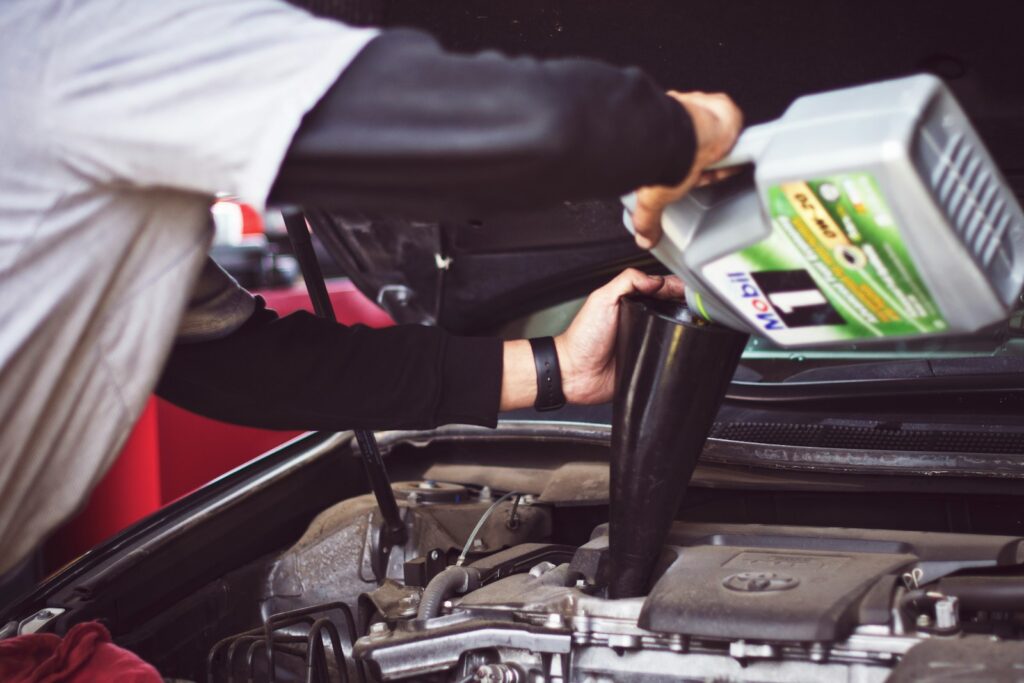
3. **Skipping Regular Oil Changes & Poor Maintenance Records**Nothing undermines buyer confidence quite as swiftly as service records that clearly indicate neglected oil changes or, worse yet, a complete absence of maintenance documentation. Regular oil changes are the lifeblood of an engine, ensuring proper lubrication, cooling, and cleanliness. Without fresh oil, an engine suffers increased friction and wear, leading to reduced performance, premature component failure, and a significantly shortened lifespan.
When a potential buyer scrutinizes a vehicle’s history, a spotty or non-existent maintenance log immediately raises serious concerns. They assume the worst-case scenario: that fundamental services like oil changes, tire rotations, and tune-ups have been overlooked, leading to hidden problems and accelerating wear and tear. This lack of transparency forces buyers to question the car’s overall reliability and can make them suspicious of what else might have been neglected, even if the car appears to run fine.
Conversely, a comprehensive service history, complete with receipts and dates for all routine maintenance and any repairs, serves as indisputable proof of responsible ownership. Sellers who can provide full-service logs often command a noticeably higher price, as this documentation instills trust and peace of mind in the buyer. It not only demonstrates diligence but also provides a clear timeline of the car’s health, countering any assumptions of neglect and justifying a higher valuation.
Read more about: Rev Up Your Portfolio: 14 Classic Muscle Cars Middle-Class Enthusiasts Can Afford for Unrivaled Fun and Smart Investment

4. **Ignoring Minor Body Damage & Rust Spots**Those seemingly harmless little dents, scratches, and dings might appear insignificant to a long-term owner, but they act as immediate red flags for prospective buyers. Visible damage, even if minor, severely detracts from a car’s curb appeal, making it look less cared for and suggesting a general lack of attention to detail. To many buyers, neglected bodywork implies that hidden mechanical issues might also exist beneath the surface, further fueling their skepticism.
Even more detrimental than surface imperfections are rust spots. Rust spreads insidiously and can quickly compromise a car’s structural integrity if left unchecked. What starts as a small blemish can evolve into a major concern, indicating severe corrosion that is both labor-intensive and expensive to repair effectively. Buyers view rust, even in its early stages, as a serious red flag that suggests a car nearing the end of its functional life or requiring significant investment.
Collectively, ignored body damage and rust can drastically reduce a car’s overall resale appeal. Dealers and private buyers alike will use these imperfections as leverage to negotiate down the price, sometimes by as much as 15% to 30% compared to a pristine equivalent. Addressing these cosmetic issues before listing the car for sale is a critical step in presenting a vehicle that reflects diligent care, thereby preserving its visual integrity and maximizing its market value.
Read more about: Buyer Beware: 15 Vintage Coupes That Rarely Make It Past 120,000 Miles Without Major Overhauls
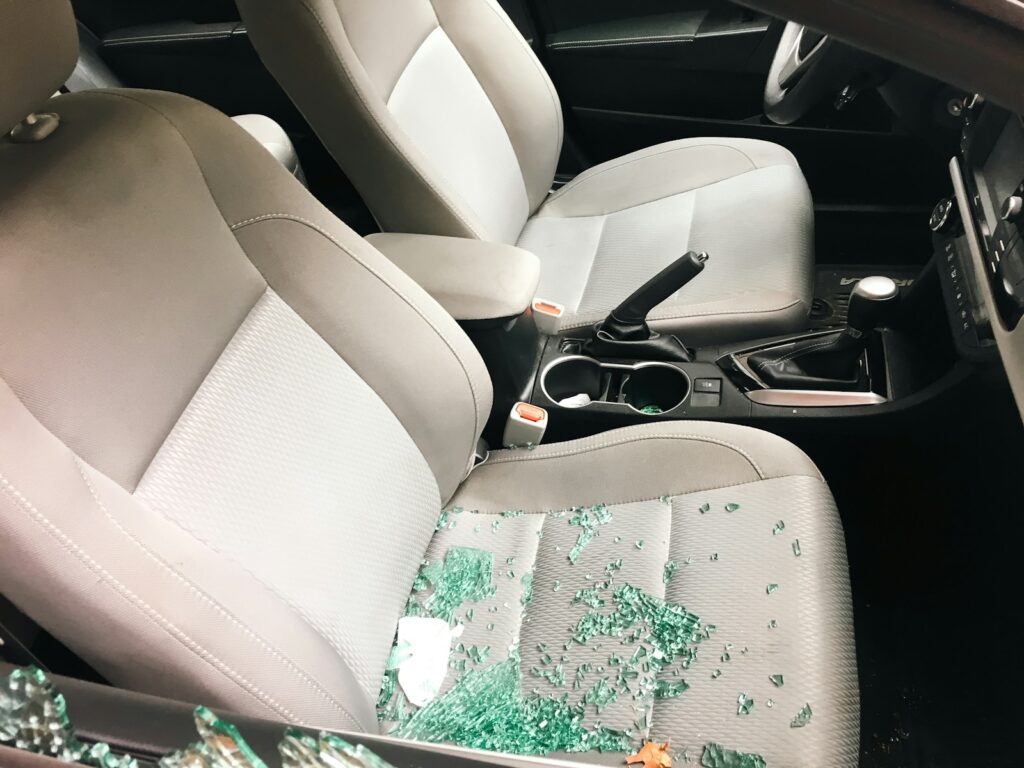
5. **Failing To Clean The Interior & Address Bad Smells**A car’s interior is a crucial reflection of its overall care, and a dirty, stained, or smelly cabin instantly broadcasts neglect to potential buyers. Clutter, crumbs, spills, and general grime scream, “I don’t care about my car,” which is the last impression you want to make. Stains on upholstery, grimy seats, cracked trim, and sticky surfaces not only reduce comfort but also hint at a lack of pride in ownership, making a buyer question the car’s mechanical well-being too.
Beyond visible dirt, lingering odors are potent deal-breakers. The context highlights that non-smokers, for instance, can always detect cigarette smoke, leading to an instant deduction of one to two thousand dollars from a car’s value. Similarly, pet hair, which is notoriously difficult to remove from upholstery and air vents, can trigger allergies and significantly reduce buyer interest, causing vehicles with visible pet hair to take noticeably longer to sell. Other musty or unpleasant stenches can have a similar deterrent effect.
Professional interior detailing can be an investment, but the return is often substantial. Clean cars consistently fetch higher offers because they create a positive emotional response and convey that the vehicle has been diligently maintained. Taking the time to vacuum thoroughly, clean all surfaces, neutralize odors, and remove any personal items transforms the cabin from an eyesore into a welcoming space, assuring buyers of the car’s quality and care.
Read more about: Buyer Beware: 15 Vintage Coupes That Rarely Make It Past 120,000 Miles Without Major Overhauls
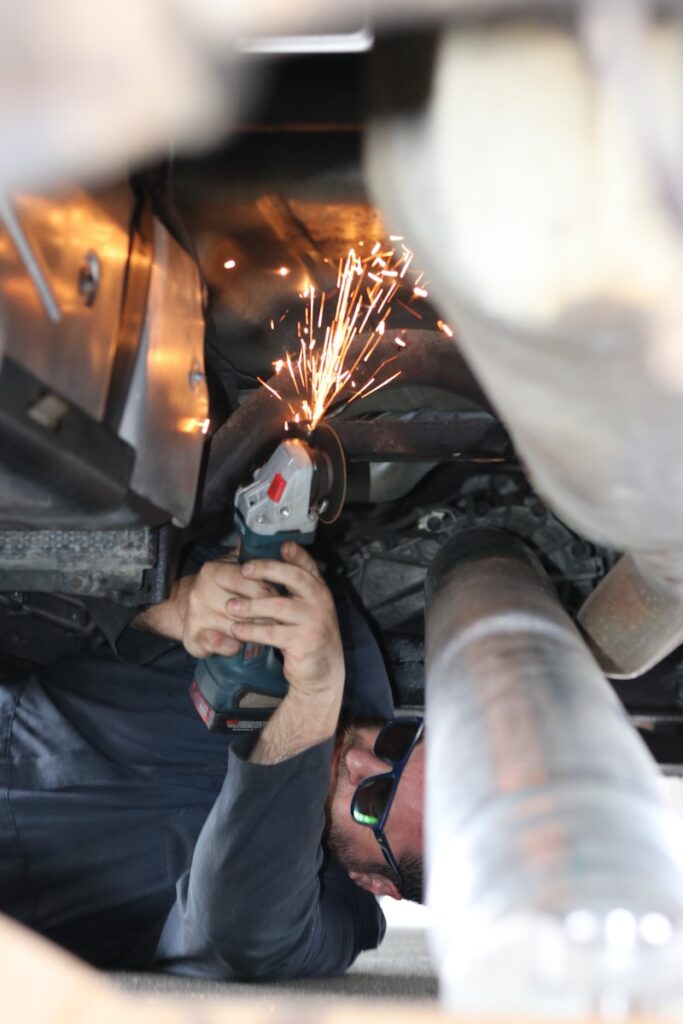
6. **Using Cheap Replacement Parts & Excessive Aftermarket Modifications**While saving money upfront on cheap aftermarket parts might seem appealing, it often comes at a significant cost to a vehicle’s long-term value and buyer confidence. These parts frequently fail to meet original equipment manufacturer (OEM) safety and performance standards, leading to compromised reliability and reduced overall vehicle performance. Furthermore, the use of non-OEM parts can void existing warranties, leaving future owners with anxieties about potential future problems and repair expenses.
Similarly, excessive or poorly chosen aftermarket modifications, while perhaps thrilling to the current owner, can severely alienate mainstream buyers. That loud aftermarket exhaust, a lowered stance, custom wheels, or aggressive body kits might scream ‘cool’ to some, but to the vast majority of potential purchasers and dealers, they signal potential trouble. Modified suspensions can affect handling characteristics, may not pass inspection requirements, and make finding compatible replacement parts a real headache for subsequent owners.
Dealers, in particular, worry about the legality, insurance implications, and long-term reliability of heavily modified vehicles. These custom additions often wear out faster than factory originals, especially if the car was used for racing or off-roading. Rather than adding value, these modifications can actually cost sellers thousands at resale, as they narrow the pool of interested buyers and raise questions about the car’s history and potential abuse. It’s often best to keep a car as close to its factory-original condition as possible to appeal to the broadest market.
Read more about: Beyond Nostalgia: 12 Enduring Reasons Why Classic Cars Still Outshine Modern Vehicles for True Enthusiasts

7. **Parking Outside Long-Term**Leaving a car exposed to the elements for extended periods, particularly parking it outside long-term without cover, significantly accelerates its aging process and diminishes its appeal. Constant sun exposure is a primary culprit, causing paint to fade and clear coats to deteriorate, which dulls the car’s exterior finish. Simultaneously, the sun’s harsh UV rays can crack and discolor interior surfaces such as dashboards, upholstery, and plastic trim, making the cabin look worn and neglected.
Beyond sun damage, rain, snow, and other weathering factors trigger rust formation, especially in vulnerable areas like wheel wells, undercarriages, and around body seams. Moisture can also degrade rubber seals around windows and doors, leading to leaks and further interior damage. These environmental assaults take a noticeable toll on both the aesthetic and structural integrity of the vehicle, contributing to a visibly older and less desirable appearance.
Buyers are keenly observant of these signs of environmental wear, which often suggest a lack of preventative care and predict higher maintenance costs down the line. A car that has been consistently garaged or kept under a cover will inevitably present in far better condition than one left exposed to the elements. Therefore, simple habits like utilizing a garage or a car cover can go a long way in preserving both the aesthetic condition and the ultimate resale value of your vehicle.
Read more about: 12 New Cars Named ‘Best Buys’ for 2025: An Expert Guide for Savvy Shoppers

8. **Modifying The Suspension**While a customized, lowered stance might appeal to a niche group of enthusiasts, it often proves detrimental to a vehicle’s resale value in the eyes of mainstream buyers. Such modifications can significantly alter the car’s intended handling characteristics, potentially compromising its safety and performance on regular roads. Moreover, many modified suspensions may not comply with local inspection requirements, creating immediate hurdles for prospective new owners.
Beyond compliance and handling concerns, custom suspension setups can lead to unexpected maintenance challenges. Finding compatible replacement parts for non-standard components can become a significant headache, often involving specialized suppliers and higher costs. This adds an element of risk and inconvenience that most buyers are eager to avoid, making them wary of heavily modified vehicles.
Dealers, in particular, approach vehicles with altered suspensions with caution. They are concerned not only with the legality and insurance implications but also with the long-term reliability of components that may have been subjected to greater stress than factory originals, especially if the car was used for racing or off-roading. These factors narrow the pool of interested buyers and can lead to a substantial reduction in trade-in value, as dealers factor in the potential costs and difficulties associated with selling such a vehicle.
Ultimately, while personalization can be gratifying for the current owner, extensive aftermarket modifications, particularly to critical systems like the suspension, often cost sellers thousands at resale. To appeal to the broadest market and protect your investment, maintaining a vehicle as close to its factory-original condition as possible is generally the most prudent approach.
Read more about: Brace Yourself! These 13 Cars Have the Most Infamous Bad Driver Reps on the Road

9. **Leaving Warning Lights Unchecked**Dashboard warning lights are not mere suggestions; they are explicit indicators of unresolved mechanical or electronic problems within your vehicle. When these alerts illuminate, they signal a fault that requires immediate attention. For a potential buyer, the sight of a glowing check engine light, ABS warning, or any other alert immediately raises red flags, prompting assumptions about severe and costly underlying issues.
The presence of unchecked warning lights suggests a history of neglect, implying that the current owner has either been unaware of or has chosen to ignore critical issues. This significantly erodes buyer confidence, as they perceive a higher risk of inheriting a vehicle riddled with hidden problems that could lead to substantial repair bills shortly after purchase. Such a perception inevitably translates into a lower offer, or even an outright refusal to buy.
Furthermore, many illuminated warning lights can cause a vehicle to fail pre-sale inspections, which are often required or highly recommended before a transaction. A car that cannot pass a basic safety or emissions check due to an active fault is essentially unsellable or will require significant investment from the buyer to bring it into compliance. Addressing these warnings proactively ensures the car presents as a well-maintained and reliable option.
From a practical standpoint, a thorough diagnostic scan can pinpoint the exact cause of most warning lights. Resolving these issues before listing the car demonstrates transparency and responsible ownership. Investing in these repairs, no matter how minor or significant, can prevent buyers from assuming the worst-case scenario and help justify a higher asking price, safeguarding your car’s true market value.
Read more about: Unleash Your PS5’s Full Potential: Essential Settings to Optimize Your Gaming Experience

10. **Ignoring Rust Spots**While minor surface blemishes are one thing, unchecked rust presents a far more insidious and financially impactful threat to your vehicle’s structural integrity and resale value. Rust, particularly when it moves beyond surface-level oxidation, spreads aggressively. It can compromise crucial structural components, including the chassis, subframe, and even suspension mounting points, directly affecting the car’s safety and longevity.
Buyers, whether private individuals or dealerships, recognize rust as a serious red flag. Even small visible spots often indicate more extensive, hidden corrosion beneath the paint or within inaccessible areas. The repair of significant rust damage is notoriously labor-intensive and expensive, often requiring cutting out corroded metal and welding in new sections. This specialized work can quickly accumulate into a hefty bill that far outweighs the perceived minor nature of initial spots.
When a buyer observes rust, they instinctively factor in the substantial costs and complexities of these repairs into their offer, leading to a drastic reduction in the car’s overall resale appeal. A vehicle with advanced rust may be deemed structurally unsound or too expensive to restore, making it a difficult sale regardless of its mechanical condition. This perception of imminent structural failure severely impacts its desirability.
Proactive measures against rust, such as regular washing, waxing, and addressing any paint chips promptly, are essential. For existing rust, professional remediation is critical before listing the car for sale. Demonstrating that rust has been addressed, and the vehicle’s structural integrity is sound, is paramount to mitigating this significant value-killer and assuring buyers of the car’s long-term viability.
Read more about: Mechanics’ Top Frustrations: 14 Bad Car Habits You Need to Stop Now to Save Money and Your Vehicle’s Life

11. **Neglecting Windshield Chips**A damaged windshield is far more than a minor inconvenience; it immediately detracts from a car’s aesthetic appeal and can significantly impact its first impression on potential buyers. Even a small chip or crack can make a listing far less compelling, signaling neglect and potentially raising concerns about the vehicle’s overall care and safety. Such imperfections are easily spotted and can cause buyers to quickly dismiss an otherwise appealing vehicle.
The real danger of windshield damage lies in its tendency to worsen over time. A tiny chip, if left untreated, can rapidly spread into a major crack due to temperature fluctuations, vibrations, or impacts. This progression transforms a simple, inexpensive repair into a costly windshield replacement, which can run into hundreds of dollars, especially for vehicles equipped with advanced driver-assistance systems integrated into the glass.
Beyond cosmetic and cost implications, a compromised windshield poses a significant safety hazard. It can obstruct the driver’s view, and in many jurisdictions, driving with a cracked window is illegal. Buyers are acutely aware of these safety and legal ramifications, and they will factor the cost of repair or replacement into their offer. They will also consider the hassle of addressing the issue immediately after purchase.
Fortunately, many insurance companies cover windshield repair or replacement with little to no impact on your deductible, making it a cost-effective fix. Addressing chips and cracks promptly before selling is a straightforward way to enhance your car’s presentation, eliminate a major red flag, and remove a key negotiation point for buyers, thus preserving its maximum resale value. It’s a small effort with a substantial return.
Read more about: Unlock Major Savings: 15 Essential Car Maintenance Hacks That Can Save You Over $1000 Annually (Even on Brand New Models)

12. **Failing To Replace Cabin Air Filter**The cabin air filter is an often-overlooked component, yet its neglect can have tangible negative impacts on both passenger comfort and your car’s resale value. A dirty or clogged cabin air filter impairs the efficiency of the heating, ventilation, and air conditioning (HVAC) system, making it work harder and consume more energy. This inefficiency can translate into reduced fuel economy and a noticeable decline in interior climate control performance.
Beyond performance, a severely dirty cabin air filter is a prime breeding ground for bacteria, mold, and allergens, leading to persistent musty or unpleasant odors inside the vehicle. These lingering smells are potent deal-breakers for potential buyers, instantly creating a negative impression and suggesting a lack of diligent maintenance. A buyer is unlikely to feel confident about a car whose interior environment is consistently stale or unpleasant.
While a clean cabin filter doesn’t directly impact the engine’s longevity, maintaining all aspects of a vehicle, including its air quality systems, collectively signals responsible ownership. For buyers, the presence of a clean, functional HVAC system free from odors is a clear indicator that the car has been properly cared for. Conversely, a foul-smelling interior due to a neglected filter often prompts buyers to assume deeper, more costly problems.
Replacing a cabin air filter is one of the most inexpensive and straightforward maintenance tasks, often costing minimal amounts and requiring little time. This small investment can dramatically improve the interior atmosphere, enhance HVAC performance, and serve as a subtle but powerful signal to buyers that the vehicle has received meticulous attention. It’s a simple fix that pays dividends in buyer satisfaction and overall resale appeal.
Read more about: Master the Wild: 14 Essential Survival Gear Items for Any Outdoor Challenge
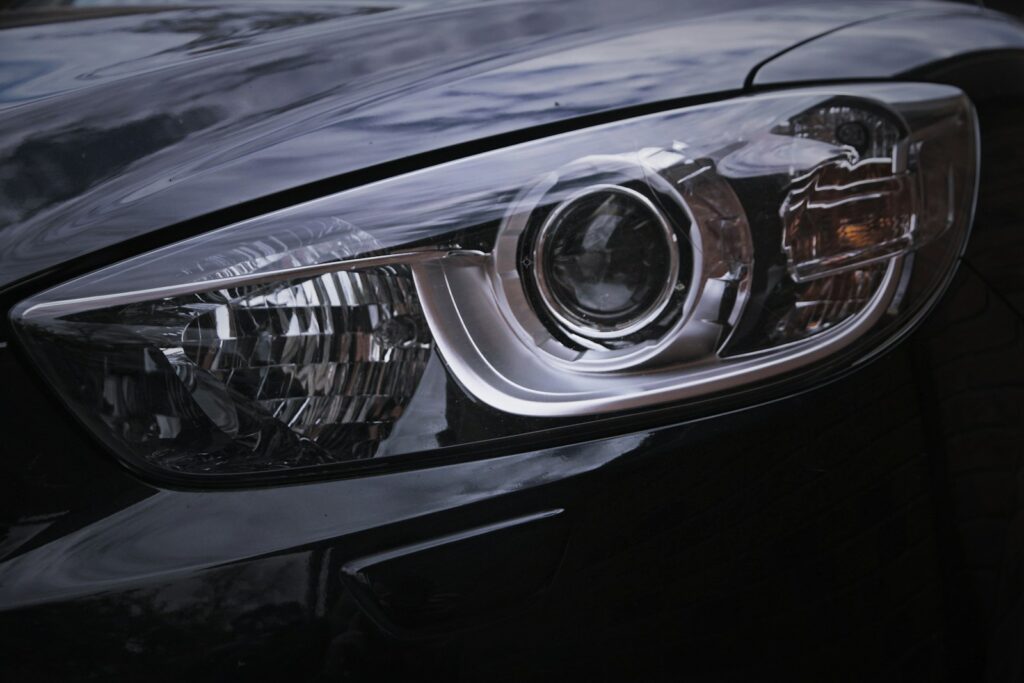
13. **Not Fixing Broken Lights**When evaluating a used vehicle, potential buyers meticulously scrutinize every system, expecting full functionality. Non-functional exterior lights – be they headlights, taillights, brake lights, or turn signals – immediately raise serious safety concerns and can serve as undeniable evidence of neglect. Such issues are not just cosmetic; they represent active safety hazards that can lead to failed vehicle inspections and expensive fines for the new owner.
Beyond the immediate safety and legal implications, broken lights frequently hint at deeper electrical issues lurking beneath the surface. Buyers might interpret a burnt-out bulb as a symptom of faulty wiring, a failing fuse box, or other complex electrical problems that could be costly and frustrating to diagnose and repair. This perception of hidden electrical gremlins can be a significant deterrent, leading to a considerable reduction in perceived value.
Furthermore, damaged or yellowed headlight and cracked taillight lenses visibly detract from the vehicle’s curb appeal. Headlights are often considered the “eyes” of a car, and when they appear dull, hazy, or cracked, the entire front fascia loses its attractiveness. Similarly, fractured taillights disrupt the car’s rear aesthetic. These imperfections suggest a lack of pride in ownership, making the car look older and less cared for than it might actually be.
Fortunately, addressing most broken or damaged lights is a relatively straightforward repair. Many modern vehicle lights can be replaced with basic hand tools, or a professional can perform the task efficiently. Ensuring all exterior lights are fully functional and aesthetically sound before listing your car for sale is a critical step in presenting a safe, well-maintained vehicle. It eliminates a major safety concern, avoids visual deterrents, and prevents buyers from using these obvious flaws as leverage for price negotiation.
Read more about: Watch Out: 12 Compact Cars Prone to Major Engine Issues Before 80,000 Miles – A Consumer Guide
14. **Letting Battery Terminals Corrode**Corrosion on battery terminals, while seemingly a minor issue, acts as a prominent warning sign of neglect and can severely impact a car’s starting system and overall electrical reliability. The crusty, often greenish-white buildup is not merely an unsightly mess; it significantly interferes with the electrical connection between the battery and the vehicle’s systems, leading to poor starting performance, flickering lights, and issues with other electrical components.
For a potential buyer, visible corrosion on battery terminals is an instant red flag. It immediately suggests that basic, routine maintenance has been overlooked, prompting questions about what other critical areas of the car might have been neglected. This visible sign of oversight fosters distrust and makes buyers question the car’s overall reliability and the potential for future electrical repairs.
Moreover, severe corrosion can degrade the battery itself and lead to premature failure of other electrical components due to inconsistent power delivery. Buyers are keenly aware that addressing electrical issues can be complex and expensive, and the presence of corroded terminals indicates a higher likelihood of such problems down the line. This perceived future financial burden directly translates into a lower asking price or a complete loss of buyer interest.
Cleaning corroded battery terminals is typically a simple and inexpensive task that can be performed with common household items or specialized battery cleaning products. Taking the initiative to clean these terminals before showing your car demonstrates meticulous attention to detail and assures buyers that the vehicle has been cared for. It removes an obvious visual deterrent and reinforces the impression of a well-maintained car, thereby protecting its resale value.
***
Protecting your car’s resale value is not a passive endeavor; it’s an active commitment to diligent maintenance and smart ownership decisions. From the moment you drive a vehicle off the lot, countless factors begin to influence its eventual worth, many of which are within your direct control. By systematically addressing common pitfalls – from timely fluid changes and meticulous cleaning to avoiding problematic modifications and swift repairs – you actively preserve your investment. Ignoring these details might save a few dollars in the short term, but it almost invariably leads to a significantly diminished return when it’s time to sell. Remember, a car’s true value isn’t just about its age or mileage; it’s a testament to the care it has received, a story told through every well-maintained component and every pristine surface. Approach your car’s upkeep with foresight, and you’ll be well-positioned to achieve the best possible deal when the journey with your current vehicle concludes.

